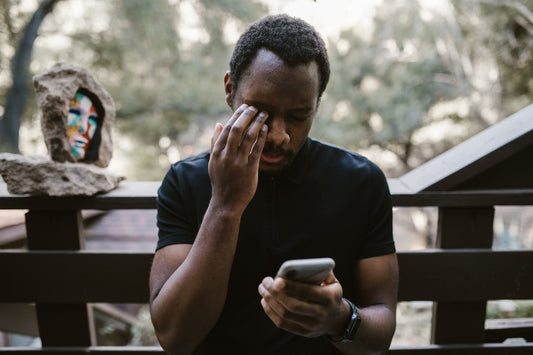Disclaimer: Content is created by humans, AI, or a mix of both. Reader discretion is advised.
The topic of men peeing while sitting down might seem unusual or even taboo, but it’s an interesting and practical subject worth exploring. While standing to pee is often considered the norm for men, many choose to sit instead, and the reasons for this decision are varied and compelling. This article will delve into the different motivations, benefits, and cultural aspects behind why some men prefer to pee sitting down.
Comfort and Convenience
A More Relaxed Position
One of the primary reasons men may opt to sit down while urinating is comfort. Sitting down allows for a more relaxed posture, especially for those who might be feeling tired or physically strained. It eliminates the need to stand and maintain balance, providing a moment of rest during a busy day.
Nighttime Convenience
For men who wake up in the middle of the night to use the bathroom, sitting down can be particularly advantageous. Sitting helps avoid the risk of missing the target in a groggy state, which can result in unwanted messes and extra cleaning. This is especially beneficial in dim lighting when aiming can be a challenge.
Hygiene and Cleanliness
Reducing Splash and Mess
A significant advantage of sitting down to pee is the reduction of splash and mess. Standing to urinate often leads to splattering, which can dirty the toilet and surrounding area. Sitting down ensures the stream is more contained, keeping the bathroom cleaner overall.
Improved Bathroom Hygiene
In households with shared bathrooms, sitting down to pee can be a thoughtful gesture toward other family members or roommates. It minimizes the spread of urine droplets and reduces the need for frequent cleaning, promoting a more hygienic environment for everyone.
Health Considerations
Prostate Health
Men with prostate issues, such as benign prostatic hyperplasia (BPH), might find it easier to urinate while sitting down. Studies suggest that sitting can allow for better bladder emptying in men with enlarged prostates, which reduces the risk of urinary retention and associated complications.
Addressing Urinary Tract Problems
Some men experience conditions like urinary urgency or difficulty starting the flow of urine. Sitting down can make the process more manageable, as it relaxes the pelvic muscles and supports a steadier flow. This position can be particularly helpful for older men or those recovering from surgery.
Cultural and Social Influences
Different Norms Across Cultures
Cultural practices can influence whether men sit or stand to urinate. In some countries, sitting down is more common due to hygiene expectations or traditional customs. For instance, in Japan and parts of Europe, men sitting down to pee is often encouraged to maintain cleanliness in shared spaces.
Changing Social Attitudes
Modern discussions around gender roles and stereotypes have also opened the door for men to feel more comfortable sitting down to pee. The act is no longer viewed solely as a “feminine” behavior, but rather as a practical and considerate choice in certain situations.
Practical Benefits
Multitasking Opportunities
Sitting down provides an opportunity to engage in other activities, such as checking emails, scrolling through social media, or reading a book. This can make the bathroom break more productive, especially for those with packed schedules.
Easier for Individuals with Disabilities
For men with mobility issues or disabilities, sitting down to pee is often the safest and most practical option. It reduces the risk of falls and provides additional stability during the process.
Environmental Impact
Water Conservation
Sitting down to pee can contribute to water conservation in an indirect way. By keeping the bathroom cleaner, there’s less need for frequent cleaning sessions that require water and cleaning products. Over time, this can lead to a small but meaningful reduction in environmental impact.
Breaking Stereotypes
Challenging Traditional Masculinity
Historically, standing to pee has been seen as a symbol of masculinity. However, many men today are challenging this stereotype by prioritizing comfort, hygiene, and health over societal expectations. This shift highlights the importance of personal choice over rigid gender norms.
Encouraging Open Discussions
The decision to sit or stand while urinating might seem trivial, but it’s part of a broader conversation about normalizing diverse behaviors and preferences. Open discussions about such topics can reduce stigma and encourage people to make choices based on their individual needs and preferences.
Personal Preferences
Listening to One’s Body
Ultimately, the choice to sit or stand comes down to personal preference. Some men may switch between the two depending on the situation, while others might develop a consistent habit. Listening to one’s body and adapting to what feels most comfortable is key.
Tailoring to Specific Situations
There are scenarios where sitting down might simply be the more practical option. For example, in public restrooms with unclean urinals, sitting down at a clean toilet may be the preferred choice. Similarly, at home, some men might sit to pee out of consideration for others.
Common Misconceptions
It’s Not “Unmanly”
One of the most pervasive myths is that sitting down to pee is “unmanly.” This notion is outdated and rooted in rigid gender stereotypes. Choosing to sit is often a pragmatic decision rather than a reflection of one’s masculinity.
It’s Not Always a Sign of Illness
While health conditions can prompt some men to sit while urinating, this is not always the case. Many healthy individuals make this choice purely for the added comfort or hygiene benefits.
Conclusion
Sitting down to pee is a personal decision influenced by a variety of factors, including comfort, health, hygiene, and cultural norms. While standing remains the default for many men, sitting can offer numerous benefits that are worth considering. By understanding and respecting these choices, we can foster a more inclusive and considerate perspective on what might seem like a trivial aspect of daily life.


